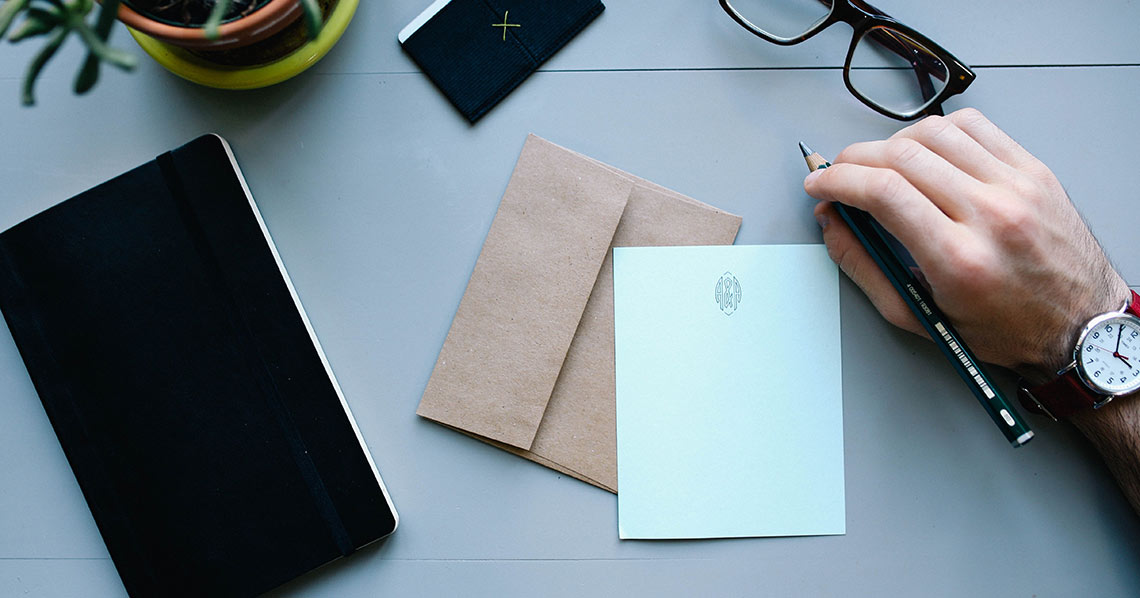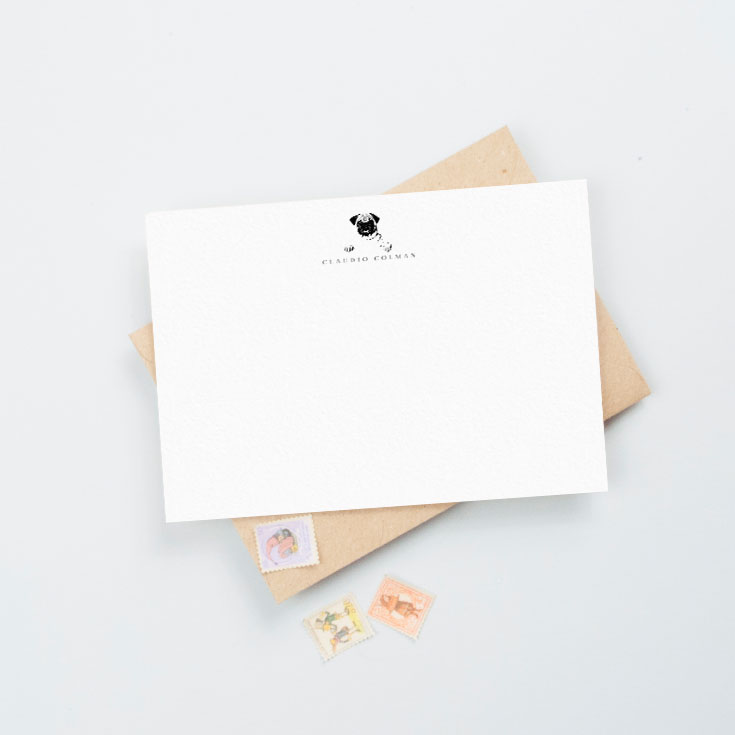5 Top Tips: How to Write a Formal Letter
Words by Utterly Printable

It is not actually that often that we have to write a formal letter. Most of our written communication is technology based, and it’s very informal: email, social media, and text messagin all tends to be very chatty and unstructured. We as a company even offer a range of digital invitations and announcements for smartphones…which is quite a departure for a print company! However, sometimes there will be occasions where only a formal letter will do. Here are some top tips to help you master the art of formal letter writing.
1. Setting the Page
On a classic stationery card, you write your own address in the top right-hand corner. Below this the date. Now you switch to the left side of the paper and write the name and address for the person you are sending the letter to. This might seem strange if you’re writing to your nearest and dearest, but it just the way things are done!
2. Addressing the Letter
Formal letters start with the word Dear and then the name of the person you are writing to. Depending on how well you know them you can either use just a Christian name, both names or just their surname with prefix. So, you could write Dear Sarah, Dear Sarah Jones, or Dear Mrs Jones. If you do not know the name of the person you need to write to you, because you are perhaps making a complaint you would begin the letter with Dear Sir/Madam. After your address you should always have a comma.
3. Opening Statement
Your opening sentence should always explain succinctly why you are writing the letter. You can then add detail afterwards. So, for example you might start with “I am writing to you to complain about…”, or “I am writing to apply for the job of…”.
4. Your Tone and Style

So, if you are complaining, make a short record of what happened, adding important details such as locations, names and dates.
For a job application you would include a couple of paragraphs about why you are a good candidate for the job. Every time you make a point you should start a new paragraph.
5. The End of the Letter
Your letter ends with a summary of what you would like to happen next. So, if you’re making a complaint you need to make it clear you are expecting a reply and resolution. If you are applying for a job you thank them for their time and hope to hear from them soon.
Signing off depends on how you start your letter. If you know the name and have used it, you end your letter with Your sincerely followed by your own name. If you don’t know their name and opened with Dear Sir/Madam, you would end the letter with Yours faithfully and then your name.
If you’re sending our formal letters then you simply must get your own personalised stationery set. We have stationery sets for men, notecards for women, and even desk stationery for couples. Happy writing!
